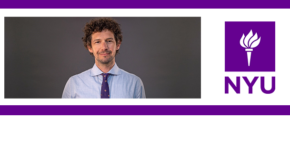 On New York University Week: There’s a lifeline for those in psychological distress, but how many people know about it?
On New York University Week: There’s a lifeline for those in psychological distress, but how many people know about it?
Jonathan Purtle, Associate Professor of Public Health Policy and Management at the School of Global Public Health and Director of Policy Research at the Global Center for Implementation Science, examines this.
Dr. Purtle’s research focuses on mental health policy. His work examines questions such as how research evidence about mental health issues and treatments can be most effectively communicated to policymakers and is used in policymaking processes, how social and political contexts affect policymaking and policy implementation, and how the implementation of policies “on the books” can be improved in practice. He is leading a five-year study supported by the National Institute of Mental Health on the implementation of the 988 Suicide and Crisis Lifeline.
Implementing the 988 Lifeline
Too often, well-intentioned policies fail because of challenges related their implementation. As a researcher focusing on mental health policy, my team and I have been keen to study the roll-out of the 988 Suicide and Crisis Lifeline—which was created by an act of Congress and was launched nationally in July 2022.
What have we learned thus far? In one study, we found tremendous variation between states in call volume following the launch of 988 and the amount of money states dedicated to its implementation. For example, state spending in 2022 ranged from $4.73 to $0.30 per person. In another study, we found that only a third of state legislators’ social media posts about 988 encouraged people to seek help from the lifeline and just 10% mentioned government action related to 988—which is troubling because state legislators have a lot of influence over its financing.
We also conducted a survey that was fielded about a year after 988 launched. We found that 42% of adults had heard of 988 and that people with serious psychological distress were more likely to be aware of the lifeline than those with no distress. We also found that use of 988 was higher among people with serious distress. These findings are promising because they suggest that awareness and use are highest among those who need it most. However, we also found that only a quarter of respondents said they were “very likely” to reach out to 988 if they or a loved one were experiencing a mental health crisis. This highlights the need to improve attitudes towards 988, something that could be achieved through theoretically and data-informed communication strategies. Over the next few years, we’ll be studying this as well as whether different states’ approaches to 988 implementation affect outcomes such as suicides and emergency department use for mental health crises.

